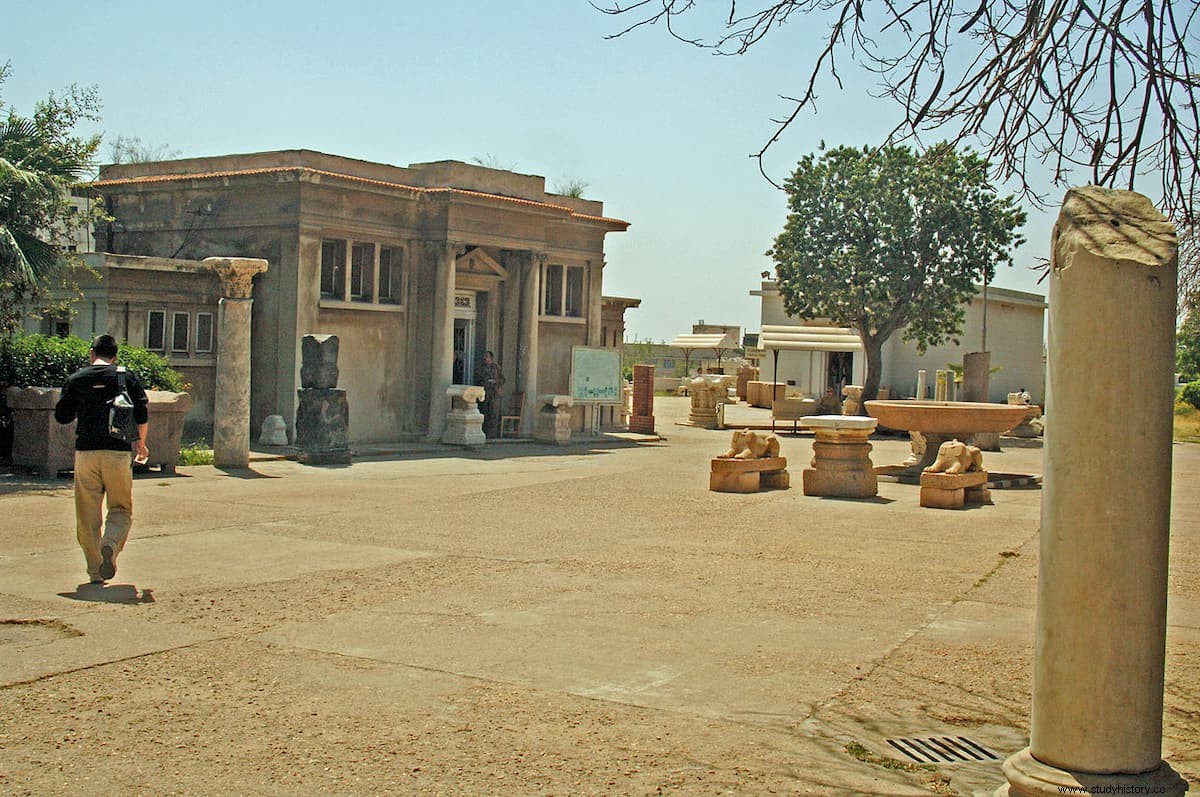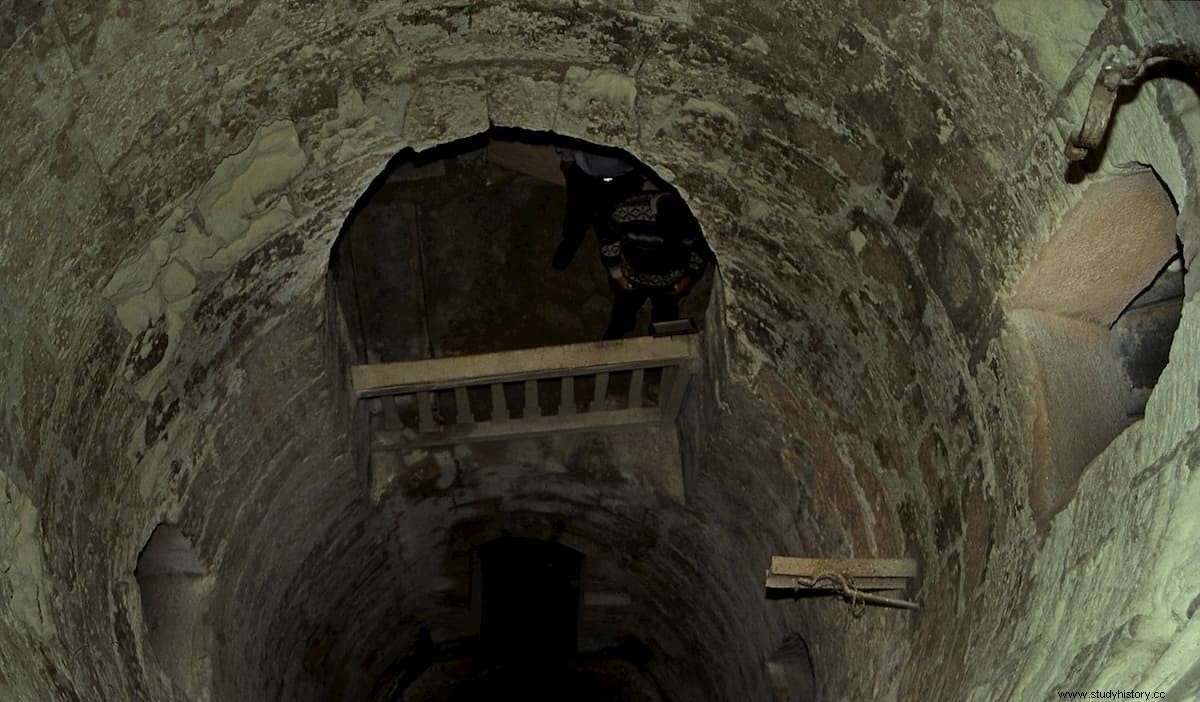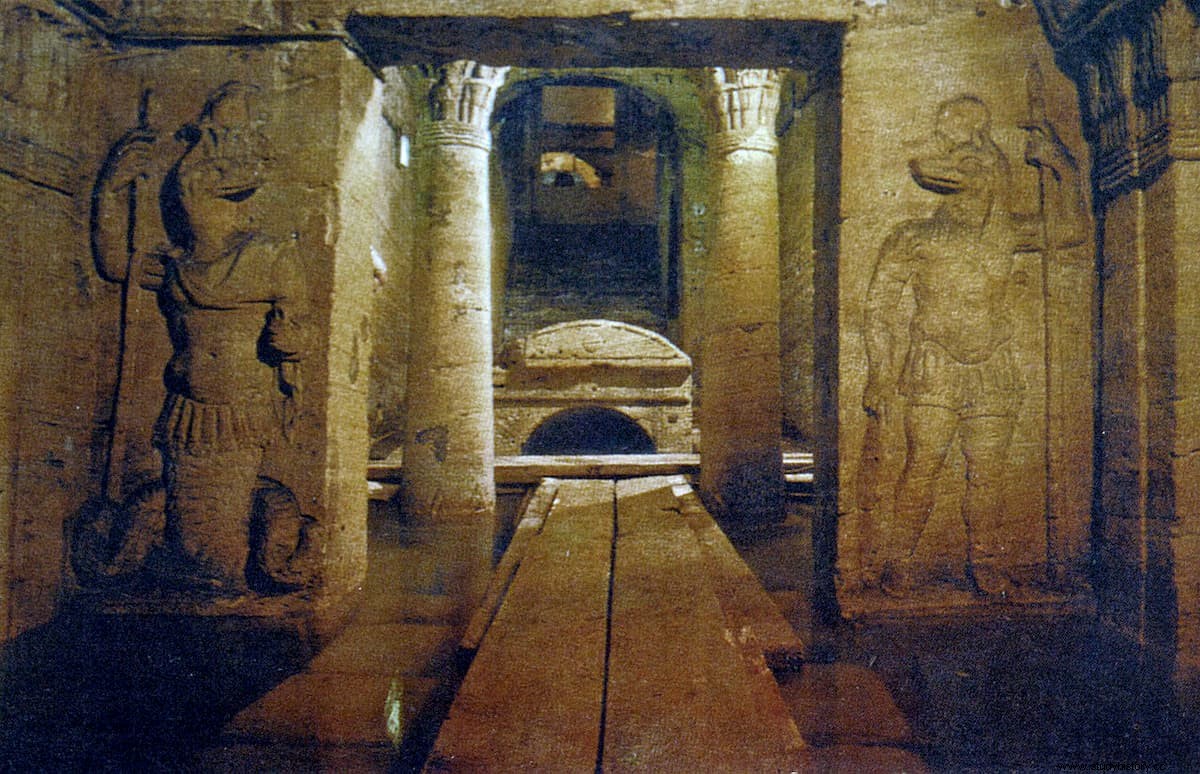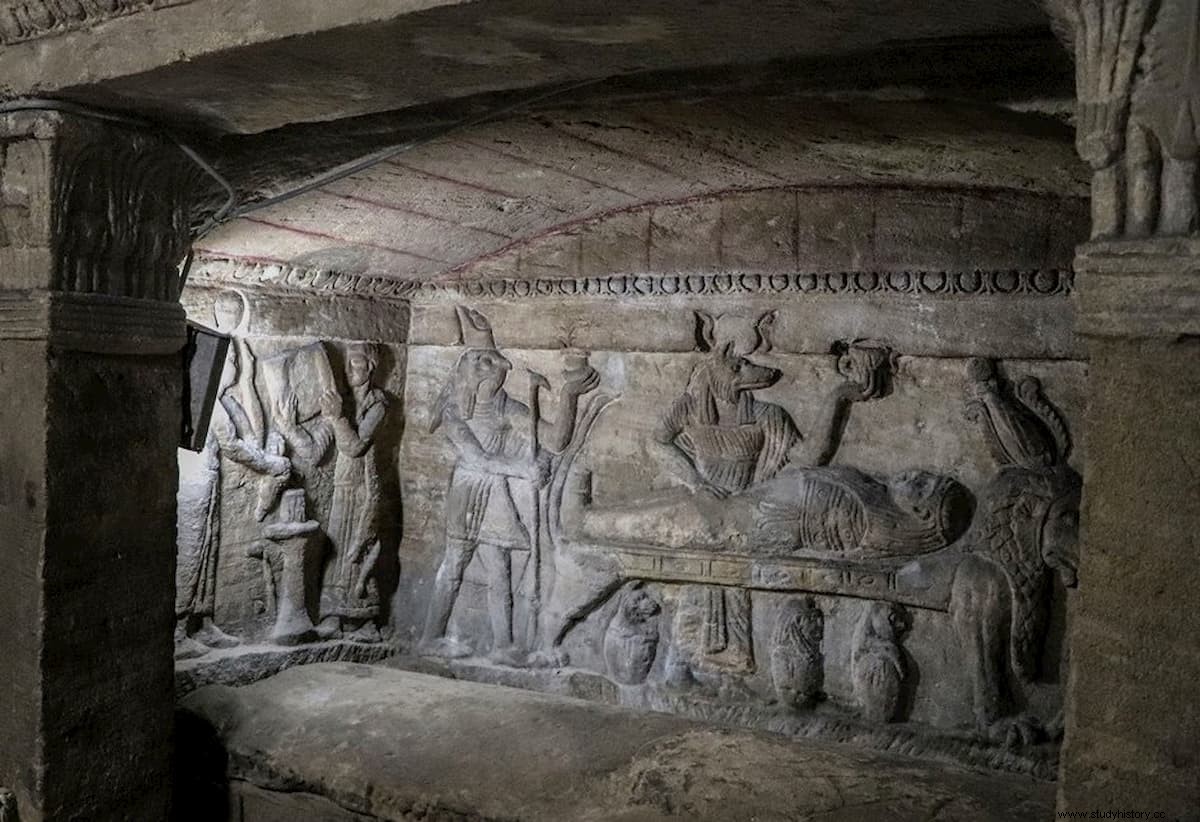The pyramids of Giza and Sakkara, the Great Sphinx, the temples of Karnak and Luxor, those of Abu Simbel, the citadel of Cairo, the Egyptian Museum, the tombs of the Valley of the Kings... We could be like this until tomorrow. The archaeological heritage of Egypt is so immense that the visitor is forced to select only the basics in the hope of being able to return more times, as is the case with other sites rich in monuments such as Rome. Today we are going to talk about a little known but equally spectacular corner:the catacombs of Kom el-Shoqafa.
In September 1900, at the height of Egyptology and at the scene of excavations carried out eight years earlier, a prodigious discovery was made and the culprit was a donkey. It is not a figure of speech; the animal was pulling a cart down Bab el-Molouk street , in the Karmouz neighborhood of Alexandria, when the ground gave way and he disappeared from view. Given that the hole was about twelve meters deep, it seems reasonable to deduce that the poor man paid with his life for having found a new and unexpected place before which the researchers rubbed their hands. Because it was a splendid network of Roman burials from the early imperial age; more specifically from the 1st and 2nd centuries AD.
In fact, it is believed that they were not originally catacombs but rather a private mausoleum of a well-to-do family which was later put to public use for no known reason, so that today there are more than three hundred burials; after all, the complex is located next to the western necropolis, so it could be considered a continuation. Nothing remains of the structures on the surface, so the first of the three levels of which it is composed is below ground, but the tombs are distributed around a large roundabout through a network of underground tunnels carved into the rock. The two lower ones were submerged under water but since 1995 only the deepest one remains submerged, which probably connected with the Serapeum (temple dedicated to Serapis, patron deity of Alexandria).

The hapless donkey fell through an access shaft, not through the main entrance, which is equipped with a spiral staircase and turns around a well about ten meters deep by six wide that served to provide natural light, although on the side walls there are small niches to place oil lamps. That stairway had smaller upper steps because the Romans considered that after visiting the deceased they lost strength as they ascended and that is why those closest to the open air constitute almost a ramp.
Going down the stairs you come to a vestibule with two niches that give way to a circular room with a colonnaded island in the middle with six pillars supporting a dome. It is the axis from which everything is articulated, because to the left there is a triclinium with divans that, according to an inscription, were covered with cushions (a triclinium it was a type of dwelling that was used for ritual banquets, in this case of an obvious funerary nature); in the background a small chamber decorated with two statues. From that roundabout you go down to the next level through a breach in the wall that was made on an unknown date.

This opens before the visitor what is possibly the most curious corner of the place, the Salón de Caracalla . It is named after the Roman emperor; he is not buried there but his horses are (he was very fond of horse racing), which were buried in said hall around 215 AD.
The main part of the entrance to the burial chamber is in the form of a lintelled temple, supported by two columns of capitals in the shape of papyrus, lotus and acanthus leaves, typical of ancient Egypt. The architrave above shows a relief of a winged sun disk flanked by figures of Horus as a falcon.
Past that entry, there are two agathodaemon (Greek spirit or demon of the vineyards and cereal fields that the Romans assimilated to theirgenii of fortune and used to be associated with banquets) serpentine, each surmounted by the pschent (the double crown of Upper and Lower Egypt) and carrying a Roman caduceus (a staff topped by wings with two intertwined serpents, a symbol of medicine and used by Mercury, the guide of the dead) and a Hellenic thyrsus (a covered rod of vines or ivy, with tied bows and a pineapple as a finial, a phallic symbol of Dionysus, although it was of Egyptian or perhaps Phoenician origin). On the snakes there are two medallions with the face of Medusa.

The interior of the chamber itself is adorned with two large figures of theriomorphic gods in relief on the wall (Toth and Anubis), although there are also a man and a woman, he represented with the characteristic Egyptian hieraticism and she also stiffly but touched. with an unmistakably Roman hairstyle, an example of artistic syncretism of the many he has.
The space is divided into three niches, each with a huge stone sarcophagus with the peculiarity that its lids are not mobile; the bodies they contained entered through its rear part, through openings made from a passageway that runs along the outer perimeter of the chamber.

Each sarcophagus, decorated with garlands in relief, is associated with a funerary scene also in relief:in the central one Anubis is seen dressed as a Roman legionnaire mummifying a body, deposited on a bed in the shape of a lion and the corresponding canopic vessels underneath; the sides are dedicated to the ox-god Apis.
Apart from this original burial chamber, Kom el-Shoqafa has a network of tunnels that housed later burials in an example of reuse that drew comparisons with the catacombs of Rome.
However, the name of the site has nothing to do with it; means "heap of shards » and it was named because there were found thousands of pieces of terracotta from the ceramic jars that the relatives of the deceased brought with food and drink to consume during the funeral services and that they broke when they finished because they did not want to take them home because they had used in those circumstances.
